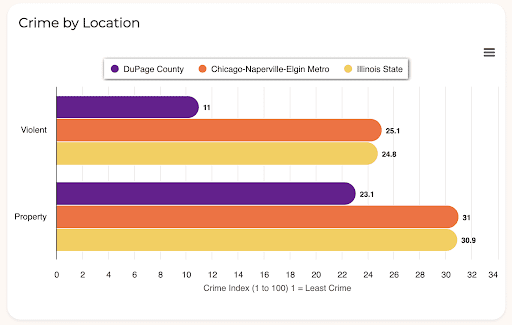During a local conference on public safety, DuPage County State Attorney Bob Berlin provided an early update on the effects of the controversial SAFE-T Act, which eliminated cash bail in the State of Illinois. Although hotly debated over the past two years, Bob Berlin says the Act seems to be “working as intended” and helping keep the citizens of Illinois safer.
Judging by the figures Berlin presented, the Safe-T Act offers “early returns” and may signify a new era for state law enforcement, at least in DuPage County.
First Four Months of the SAFE-T Act
The Safety, Accountability, Fairness and Equity-Today Act (or SAFE-T Act) was first passed and enacted in Illinois in early 2021. This piece of legislation, which was signed into law by Governor J.B. Pritzker, was an ambitious collection of reforms for Illinois’ criminal justice system: it included major modifications to the way the state deals with policing strategies and training, sentencing, the management of its correctional facilities, and pretrial detention.
Released Without Bail: A Risky Move?
With such an enormous scope, it was only natural for the SAFE-T Act to trigger heated debates, both during and after its approval. Perhaps one of its most controversial aspects was overhauling Illinois’ pretrial detention system. The SAFE-T Act collected many of the same provisions of the older Pretrial Fairness Act: it eliminates cash bail. Instead, it lets judges decide whether to release each prisoner awaiting trial on a case-by-case basis after determining “whether the defendant poses a specific, real, and present threat to a person” and whether they are likely to flee.
Under this Act, prisoners awaiting trial for non-violent crimes or unlikely to hurt others and show little risk of wilful flight (for example, if they have strong family ties or a steady local job) can be released immediately without posting cash bail. According to the bill’s sponsors, this helps eliminate the systemic bias against low-income, minority suspects: people of fewer means often found it harder to post bail and had to remain incarcerated for longer, even if they were later found innocent.
These provisions of the SAFE-T Act were subject to the hottest debates. Some criminal justice activists lauded it as a first step in repairing the wounds of 2020’s “Black Lives Matter” riots.

What Else Was Included in the SAFE-T Act?
The SAFE-T Act was an omnibus bill that bundled a wide array of topics, all centered on one aspect of the criminal justice system. Not all of them were equally controversial, and some sections are still pending full implementation.
Other provisions included:
- A proposal to end qualified immunity for police officers, which fortunately was removed.
- New requirements for police reporting, use of force policies, and misconduct investigations.
- New procedures to both certify and decertify law enforcement officers.
- Increased funding for “co-responder” patrols allows medical professionals to accompany police officers when responding to emergencies.
- Expanded work-release and educational programs for prisoners serving sentences under 5 years.
- Reduced parole times.
The SAFE-T Act in Numbers – What Actually Happened?
Although the SAFE-T Act was approved in 2021, eliminating cash bail was complex. In addition, some of its mechanisms faced legal challenges, as it was believed they could have violated the State’s Constitution. As a result, the “Pretrial Fairness” section of the Act did not come into force until September 18, 2023.
DuPage County has been the first to declare an overall gain only four months after its implementation. So far, judges have been using their discretion appropriately when deciding who should be released — and who should stay put until their trial date.
Within the first month of the Act’s implementation, the DuPage County State Attorney’s office filed 178 petitions to detain defendants until their trial. Approximately 47% of these were granted.
Among those who were ordered to remain behind bars, nearly half were charged with domestic violence or with violating a restraining order. These crimes generally were eligible for cash bail, and according to Berlin, it is safe to say that “many of these defendants would post bond and be released.”
And what about the ones who did manage to get out of jail without having to pay? It’s too soon to tell, but so far, there’s been no noticeable uptick in the county’s violent crime rates. The number of armed robberies, carjackings, and aggravated robberies in DuPage has been declining for at least three years.
DuPage County Crime Rates
One thing to point out, though, is that DuPage County’s violent crime rate is less than half that of nearby areas and the average in the State of Illinois, according to Best Places – DuPage County, IL Crime.

With significantly fewer violent offenders than the state average, this county might not be the best example of whether the SAFE-T Act works. The real test will be seeing what happens in Chicago and Cook County, where violent crimes are more common.
Knowing these crime rates, it makes sense that the governor and other state officials would want DuPage County to be the first to speak up, especially during an election year. But the jury may still be out on whether the SAFE-T Act will be successful across the state.









